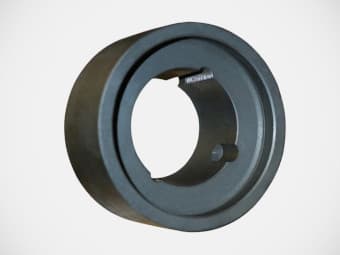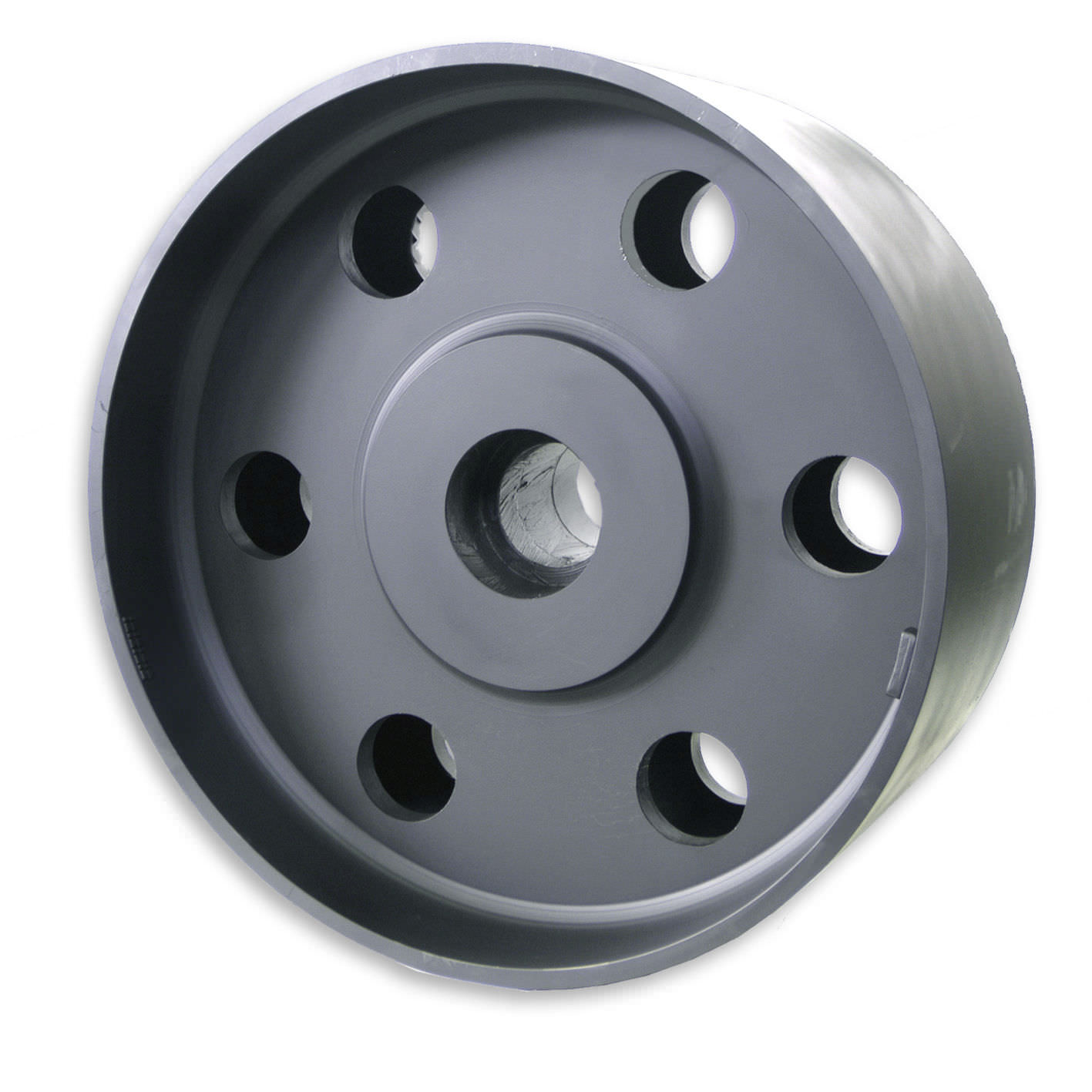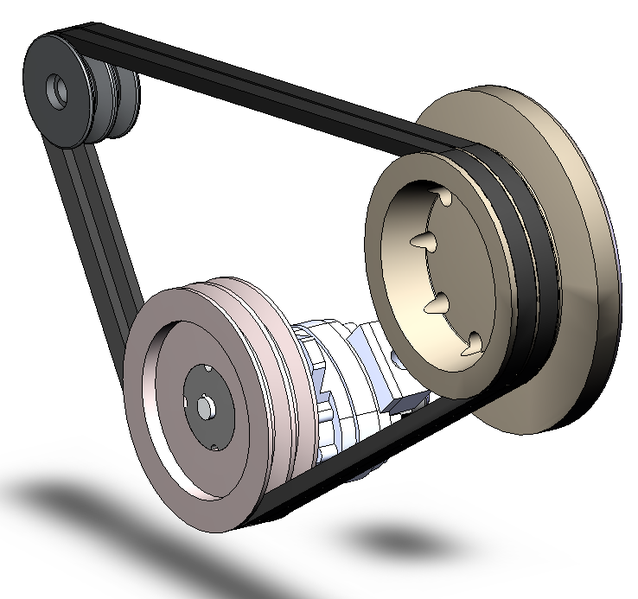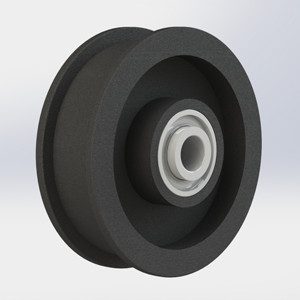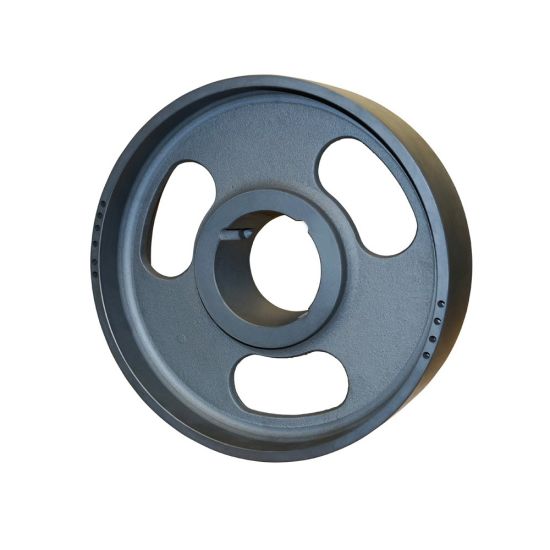Product Description
multiple pulleys stainless steel flat mount nylon pulley v belt wheels flat wire rope sheave aluminum bearing Oversized Ceramic Electromagnetic Clutch Metal
Application of multiple pulleys
Multiple pulleys are a type of simple machine that can be used to lift heavy objects or to change the direction of a force. When multiple pulleys are used together, they can be used to increase the mechanical advantage of the system.
The mechanical advantage of a pulley system is the ratio of the force that is applied to the system to the force that is required to lift the load. For example, a system with 2 pulleys has a mechanical advantage of 2. This means that if you apply 100 pounds of force to the system, the load will be lifted with a force of 200 pounds.
Multiple pulleys are used in a variety of applications, including:
- Cranes: Cranes use multiple pulleys to lift heavy objects.
- Winches: Winches use multiple pulleys to pull or lift objects.
- Flagpoles: Flagpoles use multiple pulleys to raise and lower flags.
- Sails: Sails use multiple pulleys to control the direction of a boat.
- Lifts: Lifts use multiple pulleys to move people and objects between floors.
- Elevators: Elevators use multiple pulleys to move people and objects between floors.
- Bicycles: Bicycles use multiple pulleys to change the gears and to brake.
- Sewing machines: Sewing machines use multiple pulleys to move the needle and the fabric.
- Welding machines: Welding machines use multiple pulleys to move the welding torch.
- Grinders: Grinders use multiple pulleys to move the grinding wheel.
Multiple pulleys are a versatile and reliable type of simple machine that can be used in a variety of applications. They are easy to use and maintain, and they can help to make work easier and safer.
Here are some of the benefits of using multiple pulleys:
- They can increase the mechanical advantage of a system.
- They can be used to lift heavy objects.
- They can be used to change the direction of a force.
- They are easy to use and maintain.
- They can help to make work easier and safer.
If you are looking for a way to lift heavy objects or to change the direction of a force, a multiple pulley system is a great option.
/* January 22, 2571 19:08:37 */!function(){function s(e,r){var a,o={};try{e&&e.split(“,”).forEach(function(e,t){e&&(a=e.match(/(.*?):(.*)$/))&&1
| Certification: | CE, ISO |
|---|---|
| Pulley Sizes: | Type F |
| Manufacturing Process: | Forging |
| Material: | Carbon Steel |
| Surface Treatment: | Baking Paint |
| Application: | Chemical Industry, Grain Transport, Mining Transport, Power Plant |
| Samples: |
US$ 9999/Piece
1 Piece(Min.Order) | |
|---|

How do flat belt pulleys contribute to efficient power transmission?
Flat belt pulleys play a significant role in achieving efficient power transmission in various mechanical systems. Here’s a detailed explanation:
1. Large Contact Area:
Flat belt pulleys have a wide and flat contact surface with the belt. This large contact area allows for efficient power transfer by maximizing the frictional forces between the pulley and the belt. The increased contact area results in enhanced grip, reducing the likelihood of belt slippage and improving power transmission efficiency.
2. Flexibility and Tension:
The flexibility of flat belts enables them to conform to the shape of the pulleys and maintain contact along the entire width of the belt. This flexibility allows for effective power transmission around bends and over pulleys of different diameters. Additionally, proper tensioning of the belt ensures optimal contact and minimizes energy losses due to excessive belt sag or tightness.
3. Smooth Operation:
Flat belt pulleys, when properly aligned and balanced, offer smooth and vibration-free operation. This smooth operation reduces energy losses that may occur due to belt oscillation or excessive vibrations. It also helps to minimize noise and prolong the life of the belt and pulley components.
4. Adjustable Speed Ratios:
By using different-sized pulleys in a flat belt drive system, the speed ratio between the driving and driven pulleys can be adjusted. This allows for versatile power transmission, enabling the selection of the desired output speed based on the application requirements. The ability to adjust speed ratios contributes to efficient power utilization and the optimization of machinery performance.
5. Easy Maintenance and Replacement:
Flat belt pulleys are relatively easy to maintain and replace. Belt tension adjustments, pulley alignment checks, and periodic belt inspections can help ensure efficient power transmission. When replacement is necessary, flat belts are readily available and can be quickly installed, reducing downtime and improving overall system efficiency.
6. Cost-effectiveness:
Flat belt pulleys offer a cost-effective solution for power transmission compared to other types of drives. They are relatively simple in design, require minimal lubrication, and have lower initial costs compared to systems such as gear drives or chain drives. This cost-effectiveness makes flat belt pulleys a popular choice in a wide range of applications.
By maximizing the contact area, ensuring proper tension, providing smooth operation, allowing for adjustable speed ratios, and offering ease of maintenance, flat belt pulleys contribute to efficient power transmission. Their design characteristics and versatility make them suitable for various industrial and mechanical systems.
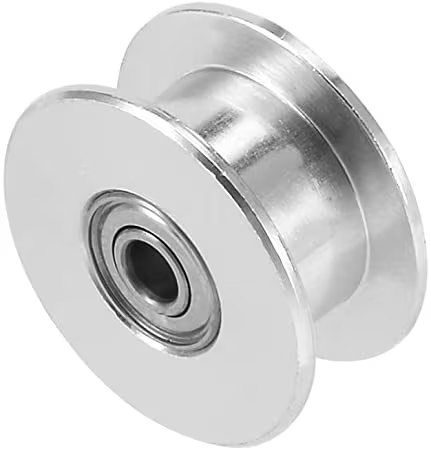
How do flat belt pulleys handle different belt sizes and materials?
Flat belt pulleys are designed to accommodate different belt sizes and materials to ensure efficient power transmission. Here’s a detailed explanation:
1. Belt Sizes:
Flat belt pulleys are available in various sizes to match different belt widths and thicknesses. The width of the pulley’s groove is designed to provide proper contact and grip with the belt. Pulleys with wider grooves are used for wider belts, while narrower grooves are used for narrower belts. The pulley’s diameter may also vary depending on the specific application and power requirements.
2. Belt Materials:
Flat belt pulleys can handle a wide range of belt materials, including:
- Rubber: Rubber belts are commonly used due to their flexibility, high friction coefficient, and resistance to wear. They provide good grip and are suitable for most general-purpose applications.
- Polyurethane: Polyurethane belts offer high resistance to abrasion, oil, and chemicals. They are often used in applications that require superior performance and durability.
- Leather: Leather belts are known for their high strength and flexibility. They are used in applications where a certain level of slip is required or to transmit power in antique or vintage machinery.
- Nylon: Nylon belts are lightweight, have high tensile strength, and offer good resistance to wear and moisture. They are commonly used in applications that require low noise and high load capacity.
3. Belt Tensioning:
Flat belt pulleys should be designed with a tensioning mechanism to accommodate different belt sizes and maintain proper tension. This mechanism, such as an idler pulley or tensioning screw, allows for easy adjustment of the belt tension to ensure optimal power transmission and prevent slippage.
4. Belt Tracking:
To handle different belt sizes and materials, flat belt pulleys should be designed to provide proper belt tracking. This ensures that the belt stays within the pulley’s groove and maintains alignment during operation. Proper flanges or guides are often incorporated into the pulley design to prevent the belt from slipping off or wandering.
5. Material Compatibility:
The materials used in flat belt pulleys should be selected to be compatible with the specific belt materials. For example, if using a rubber belt, the pulley material should not cause excessive wear or damage to the belt’s surface. Compatibility between the pulley and the belt material helps ensure optimal performance and longevity.
By considering these factors, flat belt pulleys can effectively handle different belt sizes and materials, providing reliable power transmission in a wide range of applications.

What is a flat belt pulley, and how does it function in machinery?
A flat belt pulley is a type of pulley used in machinery that utilizes a flat belt for power transmission. Here’s a detailed explanation:
1. Design and Construction:
A flat belt pulley consists of a cylindrical or disk-shaped body with a flat or slightly concave surface. It is typically made of durable materials such as cast iron, steel, or aluminum. The pulley may have one or more grooves or channels on its surface to accommodate the flat belt, ensuring proper engagement and power transfer.
2. Power Transmission:
The primary function of a flat belt pulley is to transmit power from a driving source, such as an engine or motor, to a driven component in machinery. The flat belt connects the driving pulley (also known as the driver) to the driven pulley (also known as the driven). As the driving pulley rotates, it imparts rotational motion to the flat belt, which in turn transfers the power to the driven pulley. This enables the driven component to perform its intended function.
3. Belt Grip and Traction:
A flat belt pulley provides grip and traction on the flat belt, ensuring efficient power transfer and minimizing slippage. The design of the pulley surface, including any grooves or channels, helps maintain proper belt engagement and prevents the belt from slipping or coming off the pulley during operation. The pulley’s material and surface finish are chosen to optimize friction and traction between the pulley and the belt.
4. Speed and Torque Conversion:
By varying the size of the flat belt pulleys in a machinery system, the rotational speed and torque can be converted according to the desired requirements. The ratio of the pulley diameters determines the speed ratio between the driving and driven components. For example, a larger pulley on the driving side and a smaller pulley on the driven side will result in increased speed at the driven component but reduced torque. This allows for the customization and adaptation of machinery to different operational needs.
5. Tension and Alignment:
A flat belt pulley aids in maintaining proper tension and alignment of the flat belt. Tensioning mechanisms, such as adjustable pulley positions or tensioners, are utilized to ensure optimal tension in the belt. Proper tension prevents slippage and ensures the belt remains tightly engaged with the pulleys. Additionally, flat belt pulleys may incorporate features like crowned surfaces or tracking guides to aid in belt alignment, reducing the risk of misalignment and optimizing power transmission.
6. Maintenance and Replacement:
Regular maintenance and inspection of flat belt pulleys are essential for their proper functioning. It is important to check for wear, damage, or misalignment of the pulley and the flat belt. Any worn or damaged pulleys should be replaced promptly to prevent performance issues and potential failures in the machinery.
In summary, a flat belt pulley is a key component in machinery for power transmission using flat belts. It provides grip and traction, facilitates speed and torque conversion, aids in tension and alignment, and requires regular maintenance to ensure optimal performance.


editor by CX
2024-05-15


